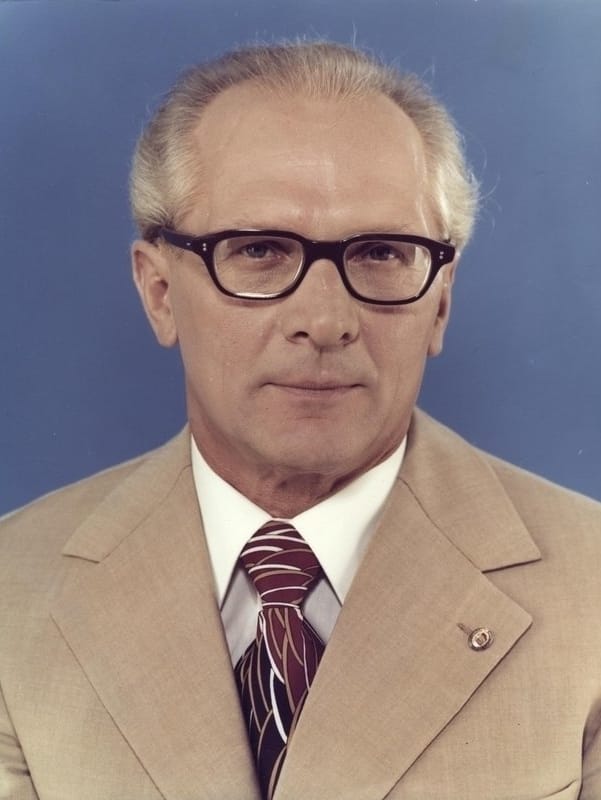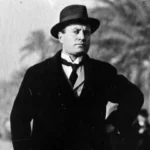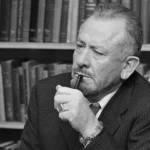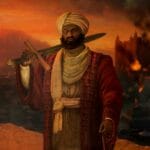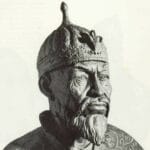Step into the fascinating world of Erich Honecker, the enigmatic leader of East Germany. Dig into his life, uncover hidden truths, and gain an unparalleled perspective on his rule. From economic struggles to social and political complexities, his story is a tapestry woven with unexpected facts. Prepare for a journey that will leave you intrigued and enlightened about this influential figure whose legacy continues to shape history.
Astounding Facts About Erich Honecker
Erich Honecker, the leader of East Germany for nearly two decades, was a figure shrouded in intrigue. He was a staunch believer in socialism, and his leadership had a profound impact on the lives of millions. Let’s delve into some lesser-known aspects of his life and rule that might surprise you.
1. The Iron Curtain of Information
One of the things that stands out about Honecker’s reign was his iron grip on information. He firmly believed that controlling what people saw, heard, and read was crucial to maintaining order and promoting the ideals of socialism. Media censorship was widespread, and any dissenting voices were swiftly silenced. While some experts argue that this control was necessary to counter Western propaganda, others suggest that it stifled creativity and critical thinking among the East German population.
2. Building a Nation, Brick by Standardized Brick
Honecker’s commitment to social welfare was evident in his ambitious “Bauen und Wohnen” (Building and Living) program. This massive undertaking aimed to alleviate the housing shortage that plagued East Germany after the war. Imagine entire neighborhoods springing up with standardized apartment blocks, all thanks to Honecker’s vision! While the program did provide much-needed housing for many, some historians argue that it came at the cost of architectural diversity and individual expression.
3. The Wall That Divided a City, and a World
Perhaps the most enduring symbol of Honecker’s rule is the Berlin Wall. Constructed in 1961, this imposing barrier physically and ideologically divided East and West Berlin. Honecker’s decision to erect the wall, while controversial, stemmed from his belief that it was necessary to stop the mass exodus of skilled workers from East to West Germany. The wall became a powerful reminder of the Cold War divisions and the human cost of political ideology.
4. A Fall From Grace as Dramatic as His Rise
Honecker’s downfall was as dramatic as his rise to power. As the winds of change swept across Eastern Europe in the late 1980s, East Germans, inspired by the fall of the Berlin Wall, took to the streets demanding more freedom and democracy. Honecker, facing mounting pressure both domestically and internationally, was ultimately forced to resign. He was later prosecuted for his role in human rights abuses, including the deaths of those who tried to flee East Germany.
5. Lingering Questions and Uncomfortable Truths
- Honecker’s tight control over the media and his decision to impose severe restrictions on travel raise important questions about the balance between security and personal liberty. Was his approach justified given the geopolitical realities of the time, or did it come at too high a price?
- The “Bauen und Wohnen” program, while undoubtedly ambitious, had far-reaching consequences for East German society. It’s worth exploring how this massive construction project affected urban planning, social cohesion, and the environment in the long run.
- The Berlin Wall, long a symbol of division and oppression, continues to fascinate historians and artists alike. What lessons can we learn from Honecker’s decision to build it, and how has its legacy shaped our understanding of the Cold War and its aftermath?
Why Was Erich Honecker Important?
We’ve already talked about some of the things that happened in East Germany, but now let’s dive into the man who became synonymous with the country: Erich Honecker.
A Complex Figure: Balancing Progress and Ideology
Honecker was a complex figure. On the one hand, he really pushed for improvements in living standards for everyday East Germans. His “consumer socialism” program was all about getting people better access to goods and services. He understood that happy citizens were less likely to rebel. But here’s the other side of the coin: Honecker was a die-hard believer in Marxist ideology. He wasn’t about to let go of the reins, even if it meant stifling any attempts to make East Germany more open and modern. This unwavering commitment to his beliefs sadly contributed to the country’s economic struggles and a society that felt stagnant.
The Berlin Wall: A Symbol of Division, A Catalyst for Change
One of the most defining moments of Honecker’s rule – and arguably one of the most symbolic moments of the entire Cold War – was his decision to build the Berlin Wall in 1961. This physical barrier didn’t just separate East and West Germany; it became a powerful representation of the ideological divide between the communist East and the capitalist West. By essentially locking down East Germany, Honecker planted the seeds for the discontent that would eventually lead to the country’s downfall.
A Legacy Shrouded in Gray: The Difficult Questions Remain
However, it’s important to remember that the Cold War was a time of great tension and uncertainty. And despite his often harsh policies, Honecker did manage to keep East Germany relatively stable during this period. He forged alliances with other communist leaders, ensuring that East Germany had a place within the Soviet bloc. So, while his legacy is a mixed bag, it’s undeniable that he played a large role in shaping East Germany’s story.
When Honecker unexpectedly resigned in 1989, it sent shockwaves through East Germany and beyond. It was the beginning of the end for the country as they knew it, ultimately leading to the reunification of Germany.
Even today, people debate Honecker’s legacy. Some see him as a brutal dictator who suppressed his people, while others acknowledge that he provided a sense of stability during a turbulent era. Understanding his leadership is crucial if we want to grasp the complexities of East Germany during the Cold War and the events that led to its dramatic fall.
It’s worth digging deeper into this period – history is rarely black and white, and Erich Honecker’s story definitely falls into the gray areas.
Did Erich Honecker Build the Berlin Wall?
Okay, so we know Erich Honecker didn’t literally lay every brick of the Berlin Wall himself. But, he was a powerful figure in East Germany at the time, and his actions definitely led to its construction. Think of it like this: if the Berlin Wall was a movie, Honecker would be the director, writer, and probably even the lead actor!
Honecker’s Role: More Than Just a Signature
In 1961, Honecker was a rising star in the East German government. He held the important position of Security Secretary of the Socialist Unity Party (SED), the big cheese political party in East Germany. This meant he was in charge of – you guessed it – security!
Now, East Germany was losing a lot of its people to the West. Not just anyone, but skilled workers, doctors, engineers – the folks a country needs to thrive. This “brain drain” was a major headache for the East German government. They saw these departures as a threat, and Honecker, being the head of security, was under pressure to do something about it.
Honecker believed that building a wall to literally stop people from leaving was the answer. And, being a powerful figure in the government, he was in a position to make it happen. He pushed the idea, argued for it, and ultimately, the decision to build the Berlin Wall went ahead.
The Wall’s Impact: Honecker’s Legacy
The Berlin Wall became a powerful symbol of division, not just between East and West Germany, but also between the ideologies of the Cold War. For Honecker, it represented his hardline stance. He truly believed in the socialist system and saw the Wall as a way to protect it from Western influence.
But the wall also had a human cost. Families and friends were separated, and crossing the border became incredibly difficult and dangerous. This reality, along with the Wall’s symbolism of oppression, cemented Honecker’s legacy as a leader who put ideology before the well-being of his people.
A Complex Picture: More Than Meets the Eye
History is rarely black and white, and Honecker’s role in the Berlin Wall is no exception. Some historians argue that he was simply a product of his time, caught in the grip of Cold War tensions. They point to the fact that the decision to build the wall was likely influenced by pressure from the Soviet Union, East Germany’s powerful ally.
Others maintain that Honecker’s actions went beyond simply following orders. They suggest that his unwavering support for the Wall, even as it became increasingly clear that it was a symbol of oppression, was a reflection of his own beliefs and his determination to maintain power.
Unraveling the Past: Research and Debate Continue
The debate about Honecker’s role in the Berlin Wall is still ongoing. Historians continue to uncover new information, and different interpretations of events are still being debated. It’s important to remember that history isn’t just about memorizing dates and names; it’s about understanding the complex and often messy realities of the past.
How Long Was Erich Honecker in Power?
So, we’re talking about Erich Honecker, the guy who ran East Germany for quite a while. To be precise, he was the top dog from 1971 until 1989, which adds up to a solid 18 years at the helm. Now, this period, often called the “Honecker Era,” wasn’t all sunshine and rainbows, but it did see East Germany experience some stability and even a bit of economic progress.
However, here’s the catch: Honecker wasn’t exactly a fan of change, especially when it came to politics. He resisted making any significant reforms, even as pressure mounted from both inside and outside East Germany. The Soviet Union, for instance, was starting to loosen its grip on its satellite states, but Honecker wasn’t budging. Inside East Germany, people were growing increasingly dissatisfied and wanted more freedom and say in how things were run.
This combination of factors – Honecker’s stubbornness, pressure from the Soviets, and growing unrest among the people – ultimately led to his downfall in 1989. It’s a good reminder that even leaders who hold onto power for a long time can’t ignore the winds of change forever.
Thinking About Honecker’s Legacy:
Honecker’s time in charge is definitely something historians still debate. Some see him as a ruthless dictator who kept a tight lid on any kind of opposition. Others argue that he was a pragmatist who, for better or worse, managed to keep East Germany relatively peaceful and stable during a very tense period – the Cold War.
It’s important to remember that history isn’t always black and white. Leaders are often complex figures, and understanding their legacy requires looking at the full picture, with all its nuances and contradictions.
Who Was the Mastermind Behind the Berlin Wall?
So, we’ve been talking about the Berlin Wall, this massive symbol of division during the Cold War. But who was really the brains behind it? Well, a lot of fingers point to Erich Honecker. He was the big cheese in East Germany for a good while, calling the shots from 1971 to 1989.
Now, Honecker was a pretty tough cookie. He ran a tight ship, and when I say tight, I mean tight. He wasn’t a fan of people disagreeing with him, especially when it came to his beloved Marxist principles. He believed in them wholeheartedly, and that meant keeping East Germany firmly rooted in his version of communism. This, unfortunately, meant that the country didn’t really move with the times, and as the rest of the world progressed, East Germany felt more and more isolated.
A Wall of Concrete, A Wall of Ideology
This resistance to change really came to a head with the Berlin Wall. See, before he became the head honcho of East Germany, Honecker was the Security Secretary. This meant he was the guy responsible for, you guessed it, security. So, when the Berlin Wall was being built in 1961, guess who was in charge of making it happen? Yep, Erich. And he didn’t mess around. He issued orders to shoot anyone trying to cross, making it clear that this wasn’t just a fence, it was a statement.
The Berlin Wall, with its barbed wire, guard towers, and ever-watchful soldiers, turned West Berlin into an island, a little capitalist haven surrounded by communist East Germany. It was a constant, in-your-face reminder of the differences between the East and the West, two completely different ways of life staring each other down across a wall.
The Seeds of Discontent: When Walls Can’t Hold Back Change
While the wall did stop a lot of people from leaving East Germany, it didn’t stop the desire for change. By the late 1980s, people had had enough. Protests erupted, and folks started looking for any way out, with many risking it all to escape to the West. All of this pressure eventually led to Honecker’s downfall. He resigned in 1989, and not long after, the Berlin Wall, that potent symbol of his rule, crumbled along with his regime. And that, my friends, was the beginning of the end for East Germany and a giant leap towards a reunited Germany.
Think of it this way:
- Imagine Erich Honecker as a strict school principal who believes in old-school discipline. He runs his school with an iron fist, and any student who steps out of line faces serious consequences. The school, in this case, is East Germany, and the strict rules represent Honecker’s unwavering commitment to communist ideals.
- Think of the Berlin Wall as a giant fence separating the schoolyard in half. One side represents the West, full of freedom and opportunity, while the other side, the East, feels stagnant and controlled. The students on the East side yearn for the freedom they see on the other side, but the wall, heavily guarded by teachers (or in this case, border patrol), seems insurmountable.
But history, like life, is full of surprises! Just like students who eventually graduate and move on, the people of East Germany found a way to break free from the constraints of Honecker’s rule, leading to the fall of the wall and a whole new chapter in German history.
Who Were the Two Leaders Kissing in Berlin?
So, we’re talking about that iconic image of two communist leaders going at it with a big ol’ kiss, right? The one that seemed to sum up the whole weird, divided world of the Cold War? Well, that was Mikhail Gorbachev, the big man himself from the Soviet Union, and Nicolae Ceausescu, the head honcho over in Romania.
The Socialist Fraternal Kiss: More Than Just a Smooch
Now, you can’t talk about this without understanding the “socialist fraternal kiss.” Picture this: three kisses, back and forth between the cheeks, like a weird communist waltz. It was their way of showing they were all in this together, these socialist nations, like one big (slightly dysfunctional) family.
But here’s the thing: those kisses weren’t just for the cameras. Experts called “Kremlinologists” – seriously, that was their job title – used to study these things like they were ancient scrolls. A missed kiss? Oh boy, that meant trouble in paradise. It was like their own secret language of diplomacy, told through awkward cheek smooches.
When a Kiss Speaks Volumes: The China-Soviet Split
And the best example of this? The whole China-Soviet split. These two communist giants weren’t exactly best buds at this point, and they let everyone know it by completely ditching the fraternal kiss. Talk about an awkward family reunion. It was a powerful symbol of just how deep the divide between them had become.
Think about it:
- That kiss between Gorbachev and Ceausescu? A snapshot of a Europe split in two by the Cold War.
- The “socialist fraternal kiss”? Like a secret handshake, only with more cheeks and political tension.
- Kremlinologists: The original body language experts, deciphering diplomatic code one kiss at a time.
- The China-Soviet cold shoulder: When even a kiss couldn’t fix a broken communist bromance.
This whole thing just goes to show that sometimes, a kiss is more than just a kiss. It’s a window into a whole world of politics, hidden meanings, and awkward communist greetings.
Who Was in the Famous Kiss On the Berlin Wall?
Okay, so we’re picking up the story with this famous smooch on the Berlin Wall. It’s not just any kiss, right? It’s like the kiss that became a whole thing during the Cold War.
You’re probably wondering who those two lovebirds locked in this lip-locking moment were. On one side, you have Leonid Brezhnev, the big boss man of the Soviet Union. Picture him as the stern uncle with a serious demeanor. On the other side, you’ve got Erich Honecker, the head honcho of East Germany, rocking those signature thick-rimmed glasses. The year was 1979, and they were celebrating the 30th birthday of the German Democratic Republic (GDR) – basically, East Germany’s big day.
The “Bruderkuss”: A Comradely Kiss, Not a Romantic One
Now, about that kiss. See, back in the day, Communist leaders had this habit of greeting each other with a hearty smooch on the lips. It was called the “socialist fraternal kiss,” and it was meant to be a sign of solidarity and friendship, like “Hey comrade, we’re in this together!”
This particular kiss between Brezhnev and Honecker wasn’t just a friendly peck, though. It was captured in a photograph that became crazy famous – one of those images that instantly transports you back to the Cold War era. It represented the tight bond between the Soviet Union and East Germany, almost like they were showing the world, “See, we’re a united front.”
A Kiss of Hope? A Kiss of Irony? You Decide
Interestingly, this photo took on a life of its own. Some people saw it as a symbol of hope, like maybe, just maybe, there was potential for peace and reconciliation between the East and the West. Others saw it as a stark reminder of a divided Europe, split down the middle by different ideologies.
So, there you have it – the story behind the kiss that became a historical snapshot. It wasn’t just about two leaders locking lips; it was about the complexities of the Cold War, political alliances, and the power of a single image.
What Was One of the Most Important Professions That East Germany Did Not Want to Lose?
So, we’ve been talking about how tough things were in East Germany, right? The economy wasn’t doing so hot, and people weren’t exactly allowed to just pack up and leave whenever they wanted. This combo led to a bunch of folks, especially those with sought-after skills, trying their luck in the West. This “brain drain” really hit East Germany where it hurt, making their already tough situation even tougher.
Think about things like healthcare, engineering, or education – these are pretty important for any country to function well. But when the people who are trained and experienced in these fields start leaving, it creates gaps that are difficult to fill. For East Germany, this meant that innovation lagged, the quality of services declined, and the overall standard of living took a hit.
The Doctor Is Out: A Critical Shortage
Now, let’s get to the heart of the matter: who did East Germany really not want to lose? You guessed it – doctors. See, doctors were hot commodities in the West. They had the skills and knowledge that were in high demand, and Western countries were often more than happy to welcome them.
This created a big problem for East Germany. Imagine hospitals struggling to function because there simply weren’t enough doctors to go around. People had to wait longer for appointments, and the quality of care suffered. It was a situation that highlighted just how vulnerable East Germany had become.
A Vicious Cycle: Brain Drain and Its Consequences
This exodus of medical professionals wasn’t just a symptom of East Germany’s problems; it made everything worse. It’s like a vicious cycle: a weak economy and limited freedom lead to skilled professionals leaving, which further weakens the economy and makes things even more challenging for the people who stayed behind.
It’s important to remember that we’re talking about real people’s lives here. The decisions made by East Germany’s government had real consequences, and the impact of the “brain drain,” particularly the loss of doctors, was felt deeply by everyday citizens.
Who Announced the Fall of the Berlin Wall?
So, we’ve been talking about the Berlin Wall, and how its fall was this huge, pivotal moment. But have you ever wondered who actually made the announcement? Who gets to go down in history as the person who said, “Hey world, the Berlin Wall is coming down!”? Well, that would be Günter Schabowski.
A Press Conference, An Unexpected Announcement
Now, Schabowski wasn’t just some random guy. He was a big deal in East Germany, a leading member of the Politburo, which was basically the top-tier governing body there. On November 9, 1989, Schabowski was holding a press conference. See, things were getting pretty tense in East Germany. People were fed up with the restrictions, with being separated from their families and friends in the West. There were protests, people were trying to flee the country…the government was under a lot of pressure to do something.
During the press conference, a reporter asked Schabowski about new regulations for travel. And this is where things get interesting. Schabowski, maybe a bit flustered, maybe not fully briefed (historians are still debating this!), responded with something along the lines of, “As far as I know, it takes effect immediately, without delay.” He was likely referring to the new regulations, but his words were a bit vague, a bit open to interpretation.
A Ripple Effect: From Vague Words to Crumbling Concrete
And interpret them, people did! Word spread like wildfire through East Berlin: The wall was open! People could cross! This wasn’t some official decree, no order from on high…it was just this kind of off-the-cuff statement that took on a life of its own.
That night, thousands of East Berliners flocked to the wall, demanding to cross. The guards, caught completely off guard, were overwhelmed. They hadn’t received any orders to open the border and had no idea what to do. But faced with the sheer number of people, the growing excitement and pressure, they eventually relented. The Berlin Wall, that symbol of division and oppression, began to crumble that night, not from explosives or military might, but from the sheer will of the people and, some might say, a slightly botched announcement from Günter Schabowski.
Who Was the Communist Leader of Germany?
Picking up from our previous discussion, let’s delve deeper into the life and leadership of Erich Honecker. This guy was a big deal in East Germany – he ran the show for nearly two decades, from 1971 to 1989.
A Dedicated Communist: Forging a Socialist State
Now, Honecker was a dedicated communist. We’re talking hardcore believer in the ideology. He was all about strengthening East Germany, making it a strong, socialist state. He really pushed for economic development and social programs, aiming to make life better for everyday East Germans. One of his big ideas was “consumer socialism.” Basically, he figured if people had access to more stuff – think appliances, cars, and better housing – it’d make them happier and more content with the whole communist system.
A Tight Ship: The Price of Dissent
But here’s where things get complicated. Honecker wasn’t exactly Mr. Popular. In fact, he was known for being pretty darn strict. He ran a tight ship, and anyone who dared to speak out against him or the government usually ended up in trouble. Freedom of speech? Not so much under his watch.
The Berlin Wall: A Controversial Legacy
And then there’s the Berlin Wall. This was a huge, controversial move on Honecker’s part. Built in 1961, the wall literally divided Berlin in half – East and West. The official reason? To stop skilled workers from fleeing to the capitalist West. But let’s be real, it also acted as a massive symbol of division and oppression during the Cold War. People were separated from loved ones, and crossing the border became a risky and often heartbreaking ordeal.
The Winds of Change: A Refusal to Adapt
Now, fast forward to the late 1980s. Things were changing across Eastern Europe. Reform movements were popping up, and people were demanding more freedom and democracy. But Honecker? He dug in his heels. He refused to budge, clinging to his hardline communist beliefs.
This stubbornness backfired big time. Protests erupted across East Germany, with people demanding change.
A Fall From Power, A Divided Legacy
In the end, Honecker’s own party turned against him. They forced him to resign in 1989. And shortly after that? Down came the Berlin Wall, symbolizing the fall of the Iron Curtain and the eventual reunification of Germany.
So, what’s the final word on Honecker? It’s complicated. Some people see him as a ruthless dictator who crushed dissent and violated human rights. Others argue that he brought stability and economic progress to East Germany during a tumultuous time. One thing’s for sure – his legacy is complex and continues to be debated by historians today. His role in building the Berlin Wall and his handling of East Germany’s final days remain topics of intense scrutiny.
Who Was the Leader of East Germany When Unity Day Was Created?
So, we’re talking about the big day, Unity Day, right? The day East Germany and West Germany decided to bury the hatchet and become buddies again. Well, picture this: it’s the late 1980s, and East Germany is under the watchful eye of a guy named Erich Honecker. He’d been calling the shots as the General Secretary of the Socialist Unity Party – think of it as the big cheese of the communist party there – since 1971.
A Leader’s Attempts at Reform, A Nation on the Brink of Change
Now, Honecker wasn’t exactly Mr. Popularity Contest winner, especially as things started heating up with folks demanding more freedom and all that jazz. But you gotta give the guy some credit; he did try to make life a bit better for East Germans. He kicked off these economic and social reforms, kind of like a mini makeover for the country, and for a while, things were looking up. People even called it the “Honecker Era.”
But here’s the thing about change – sometimes it’s like trying to hold onto a greased piglet; it just slips away. By the late ’80s, folks were getting antsy. They wanted more say in how things were run, more freedom to travel, to speak their minds – the whole shebang. Honecker, though, he wasn’t so keen on letting go of the reins.
The Wall Crumbles, A Nation Reunites, A Legacy Debated
Then came that fateful year, 1989. The Berlin Wall, that concrete symbol of division, crumbled down. It was a seismic event, a real game-changer, and it ultimately paved the way for Germany to kiss and make up.
Now, you might be thinking, “Where was Honecker during all this?” Well, he was still technically the leader when the wall fell, but his days were numbered. The winds of change were blowing, and he eventually stepped down.
Honecker’s legacy is a bit of a mixed bag, kinda like a trail mix with some sweet bits and some nuts you’d rather leave in the bag. Some folks remember him as the guy who kept things stable, who tried to make life a bit better. Others, well, they haven’t forgotten the stricter aspects of his rule. It’s a reminder that history isn’t always black and white; it’s more like a messy, complicated tapestry.
Key Points About Erich Honecker:
- Iron-clad control over information: Censorship and suppression of dissenting voices were common tactics used to maintain order and promote socialism.
- Ambitious “Bauen und Wohnen” program: This vast housing construction project aimed to address the post-war housing shortage, but some argue it compromised architectural diversity.
- Construction of the Berlin Wall: This physical and ideological barrier was erected to prevent skilled workers from fleeing East to West Germany, becoming a potent symbol of Cold War divisions.
- Fall from power: Honecker’s resignation came after mass protests, inspired by the fall of the Berlin Wall. He faced prosecution for human rights abuses.
- Unique Insights:
- Honecker’s rule forces us to consider the balance between security and personal liberty in the face of political realities.
- The “Bauen und Wohnen” program’s long-term effects on urban planning, social cohesion, and the environment are still debated today.
- The Berlin Wall’s legacy as a reminder of Cold War divisions and the human cost of political ideology is undeniable.
Want to explore more about intriguing figures throughout history? Discover the hidden truths about:
- Surprising facts about Steve Cohen, the enigmatic hedge fund manager.
- Facts about Tony Ferguson, the legendary MMA fighter.
- Fascinating facts about S. Ramanujan, the self-taught mathematical genius.
- Unlocking Francis Alexander Shields’ Finance Empire: A Comprehensive Biography - July 12, 2025
- Unveiling Francis Alexander Shields: A Business Legacy - July 12, 2025
- Francis Alexander Shields’ Business Career: A Comprehensive Overview - July 12, 2025
